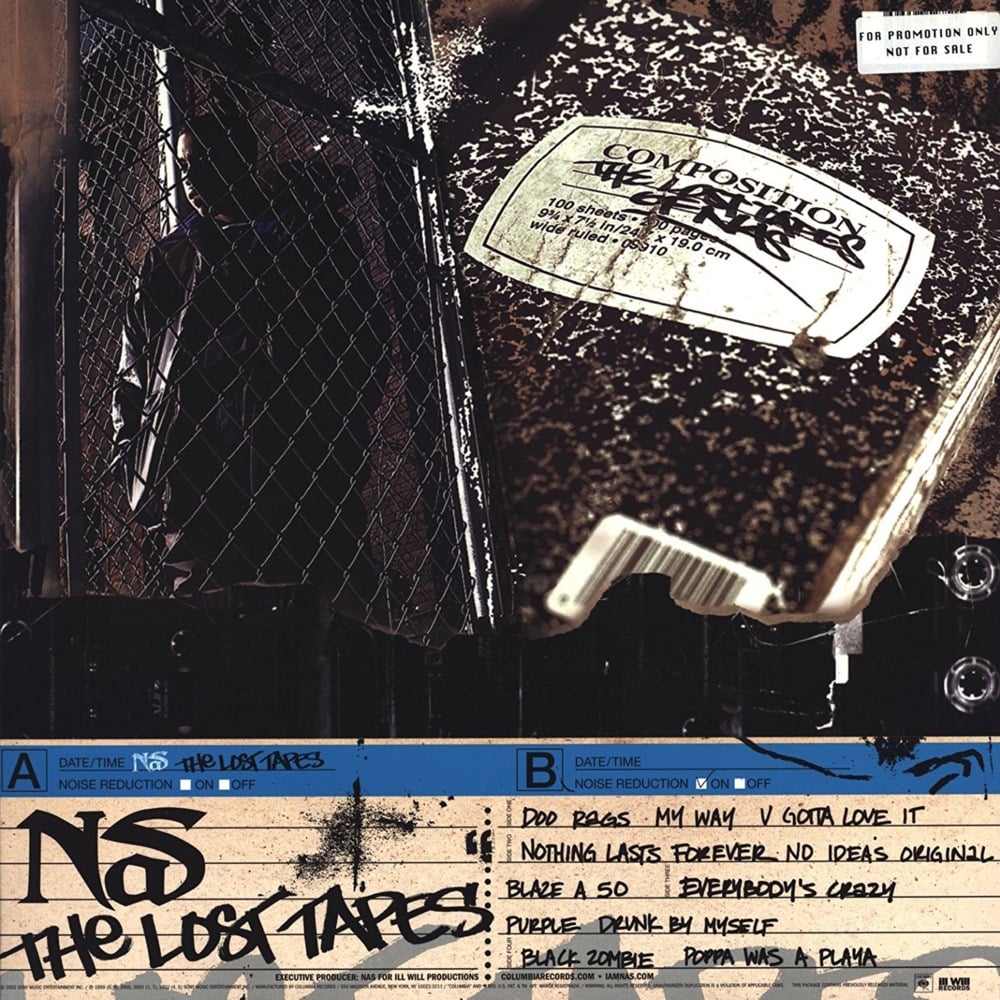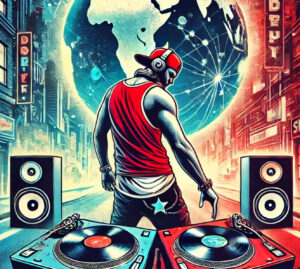Nas’ The Lost Tapes, released in 2002, is a compilation that captures some of his most introspective and reflective work, recorded between 1998 and 2001. “Everybody’s Crazy,” the seventh track on the album, stands as one of Nas’ most thought-provoking compositions, offering a raw and unfiltered look at the perils of urban life and societal issues. Originally intended for “Stillmatic” but ultimately cut, the song represents Nas’ unique approach to hip-hop lyricism, combining social commentary with braggadocio and storytelling.
In “Everybody’s Crazy,” Nas addresses deep-seated issues within both the African-American community and the broader society, from the corrosive effects of street violence to internalized prejudice. The production by Rockwilder complements Nas’ verses with gritty, hard-hitting beats, creating an atmospheric backdrop that heightens the intensity of the lyrics. Through this analysis, we will explore the meaning behind the song, the lyrical techniques Nas employs, and how it connects to broader hip-hop trends of its time and today.
Street Life and the Pursuit of Survival
One of the central themes in “Everybody’s Crazy” is the harsh reality of street life and the constant threat of violence. Nas is no stranger to chronicling the struggles of life in Queensbridge, New York. The song opens with a direct confrontation of these dangers, with Nas’ lyrics conveying a sense of survival amidst chaos:
“Everybody’s crazy, I see it all around me / Everybody’s crazy, I feel it in the air.”
These lines set the tone for the song, establishing a paranoid atmosphere where madness and instability reign. Nas presents a world where the boundaries between sanity and insanity blur, particularly in marginalized communities where violence and poverty are pervasive. The repetition of “everybody’s crazy” serves to emphasize the ubiquity of this madness, suggesting that the societal pressures faced by these communities leave individuals with few options for coping, often resorting to self-destructive behaviors.
In hip-hop, street life is a frequent motif, and Nas’ approach here mirrors the tone of many other tracks that delve into the dangers of hustling and survival. However, Nas’ depth of thought and reflection elevates the narrative beyond glorification. He invites listeners to reflect on the causes of this madness, from systemic neglect to the cyclical nature of violence, offering a more nuanced portrayal than what is typically seen in gangsta rap.
Self-Medication and Coping Mechanisms
Throughout the song, Nas touches on the idea of self-medication, both literal and metaphorical, as a means of coping with the overwhelming stressors of life. One of the most poignant lines comes early in the track:
“Drugs got the streets flooded, plus the government’s loving it / Numb from the pain, popping pills to get above it.”
Here, Nas critiques the way drugs have infiltrated urban communities, suggesting that these substances are not just a symptom of poverty but part of a broader scheme of systemic oppression. He paints a bleak picture where individuals turn to drugs as a way of numbing their pain, both physical and psychological, while those in power remain indifferent or, worse, benefit from the suffering.
This commentary on self-medication also ties into larger hip-hop trends, particularly the increasing references to drug use as both a source of pleasure and escape. In the early 2000s, hip-hop was seeing a shift from the glorification of selling drugs (as seen in much of gangsta rap) to an exploration of drug consumption as a coping mechanism. Nas, as always, remains critical, refusing to present drug use as glamorous but instead exposing its roots in the trauma of marginalized communities.
Prejudice and the African-American Struggle
Another layer of meaning in “Everybody’s Crazy” is Nas’ reflection on racial prejudice and the complex dynamics within the African-American community. The song does not shy away from addressing the internal divisions and self-inflicted harm caused by systemic racism. Nas raps:
“Prejudice in my own kind / Got me blind, we fighting the wrong war, look how the world shine.”
Here, Nas laments the infighting within the African-American community, suggesting that internalized prejudice and misguided rivalries only serve to distract from the real enemy: systemic oppression. He draws attention to how these divisions prevent solidarity, keeping the community from addressing the larger issues that affect them all. The line “we fighting the wrong war” is particularly striking, as it encapsulates the frustration Nas feels with the misdirected anger and violence that often plagues urban environments.
In a broader sense, Nas’ critique of prejudice ties into one of hip-hop’s most enduring conversations: the role of Black unity in the face of systemic oppression. From early pioneers like Public Enemy to contemporary artists such as Kendrick Lamar, the call for unity and self-awareness in hip-hop has been a recurring theme. Nas’ contribution to this discourse in “Everybody’s Crazy” is particularly resonant, as he frames the struggles of African-Americans not just as victims of external forces but also as a community that needs to reckon with its own internal conflicts.
Braggadocio and the Duality of Nas’ Persona
While “Everybody’s Crazy” is a heavy, introspective song, Nas’ signature style of braggadocio is still present throughout. He frequently oscillates between social commentary and self-praise, as in the following lines:
“I’m from the school of hard knocks, the legends respect me / Got the crown on lock, never let the streets neglect me.”
Nas asserts his dominance in the rap game, positioning himself as a leader and survivor of the streets. This duality – between reflecting on societal issues and asserting personal power – is a hallmark of Nas’ lyricism. It reflects the broader tension within hip-hop between authenticity and braggadocio, where rappers feel compelled to both critique their environments and assert their own supremacy within it.
This duality also speaks to the complexity of Nas’ persona. Unlike many rappers who rely solely on bravado, Nas’ self-assuredness is tempered by his awareness of the struggles he and his community face. His success does not blind him to the realities of street life, but rather, it makes him more attuned to them.
Broader Implications for Hip-Hop Trends
“Everybody’s Crazy” can be seen as a precursor to many of the themes that would dominate hip-hop in the following years. The emphasis on mental health, drug use, and the struggles of African-American communities has only become more pronounced in contemporary rap, with artists like Kendrick Lamar, J. Cole, and Joey Bada$$ taking up the mantle of socially conscious hip-hop. The track’s exploration of madness and self-medication foreshadows the rise of emo rap and trap, where themes of mental health and substance abuse are even more central.
Nas’ work on “The Lost Tapes” also serves as a reminder of the importance of authenticity in hip-hop. While trends in the early 2000s were shifting towards more commercialized, flashy styles, Nas remained grounded in the storytelling tradition that made him one of the most respected lyricists in the game. In this way, “Everybody’s Crazy” stands as a testament to the enduring power of introspection and social critique in rap music.
“Everybody’s Crazy” is a layered and complex track that speaks to Nas’ unmatched ability to blend social commentary with personal reflection. From its raw portrayal of street life and drug use to its critique of internalized prejudice and systemic oppression, the song encapsulates many of the themes that define Nas’ work. It also offers a glimpse into broader hip-hop trends, foreshadowing the increasing focus on mental health and social justice in rap music. For Nas, the madness he describes is both a personal and societal condition, one that demands awareness and reflection if there is any hope for change.
No comments yet.








